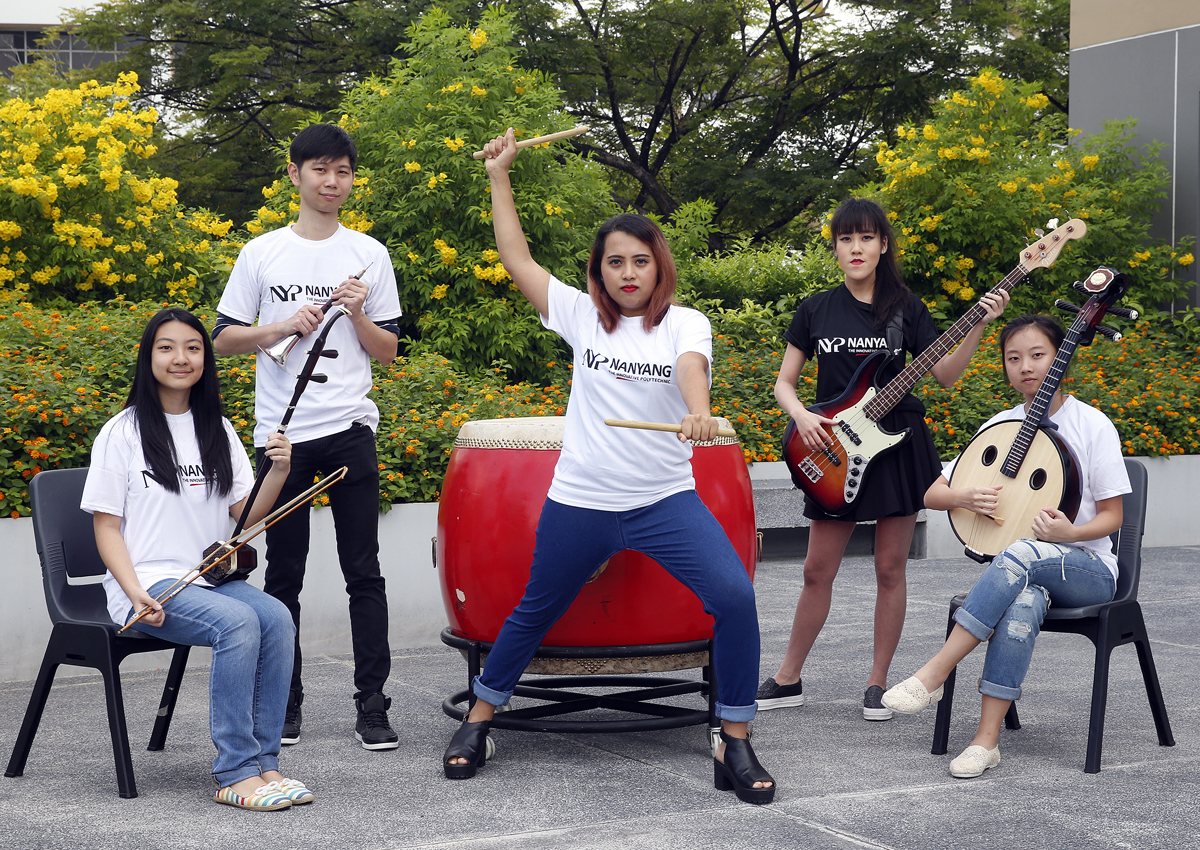When Mr Mike Chiang, 43, took over as the conductor of Nanyang Polytechnic’s (NYP) Chinese orchestra in 2003, he was surprised to find out that it had just 10 members.
“I turned up and asked the students, ‘So many people aren’t here?’ But they said that that was all of them,” he recalled.
But the tables have turned since then – sign-up lists for the co-curricular activity (CCA) stretch to more than 200 names, with some students choosing to enrol in NYP for this Chinese music group. It now has 160 members, with alumni regularly performing at concerts alongside the rest of the orchestra.
The orchestra shot to fame in 2010 when a YouTube video of it playing a medley of Korean pop songs at Yfest 2010, held during the Youth Olympic Games in Singapore, went viral, garnering more than 200,000 hits in two weeks.
It has since become known for its bold approach of using traditional Chinese instruments like the erhu or guzheng to play different music genres, including hits by rock bands like Bon Jovi and AC/DC, and soundtracks from video game series like Final Fantasy and Street Fighters.
PLAYING TO SOLD-OUT CROWDS
Mr Chiang said students were initially sceptical when he first mooted the idea of playing pop music. “But they trusted my intuition,” he said.
Handbag designer Quek Li Hui, who graduated from the polytechnic in 2012, said her friends had a different impression of Chinese music after attending the concerts.
“They thought that it was a very ancient type of thing but they were ‘wowed’ by the fact that even Chinese orchestras can play pop songs and different genres,” said the 23-year-old, who plays the electric bass guitar, on top of percussion instruments, for the orchestra.
For the past five years, the orchestra’s annual concert at the Esplanade has played to sold-out crowds of 1,600 each time. An alumni orchestra was also set up in 2013, with about 50 members focusing on playing traditional music.
The orchestra has won accolades, such as perfect scores from the entire panel of international adjudicators at the Australian International Music Festival in 2007 – the first group to do so since the festival started in 1989.
In 2011, it clinched a gold medal at the Asia Pacific Chinese Music Exchange and Competition in Taiwan.
There are differences in how pop music and traditional Chinese music should be played on their instruments, thus every detail is very important, said Ms Siti Farah Mohd Jaffar, 25, a retail management trainee who graduated from NYP in 2010.
For example, pop songs have more complex rhythms that need to be mastered so that the tune sounds authentic. Different techniques are used for the suona – sometimes called the Chinese trumpet and known for its loud high-pitched sounds – such that the sound it produces is more subtle and mellow.
As all the members are amateurs, they need to put in extra time and effort to make sure they perform the best.
“In the run-up to concerts, we stay back late to practise to make sure that every one gets their part right,” said Ms Siti Farah. “My mother asks me why I’m still going back to school when I’m already working now, but you just need to manage your time well to achieve the things that you want.”
Ms Chloe Quek, 18, who was the orchestra’s vice-president last year, said the work that she does for her CCA gives her a headstart in her business management course at NYP, where she is specialising in events management and human resource management.
“We learn how to plan logistics for events and concerts, and manage people,” she said.
Mr Chiang now thinks his decision to experiment with new genres was the right move.
He said, “Most of the younger generation would not even consider joining a traditional Chinese orchestra nowadays. But they are still keen on joining this orchestra because we are different – it’s a way to keep the tradition alive while trying out new things.”
yuensin@sph.com.sg

This article was first published on March 21, 2016.
Get a copy of The Straits Times or go to straitstimes.com for more stories.






